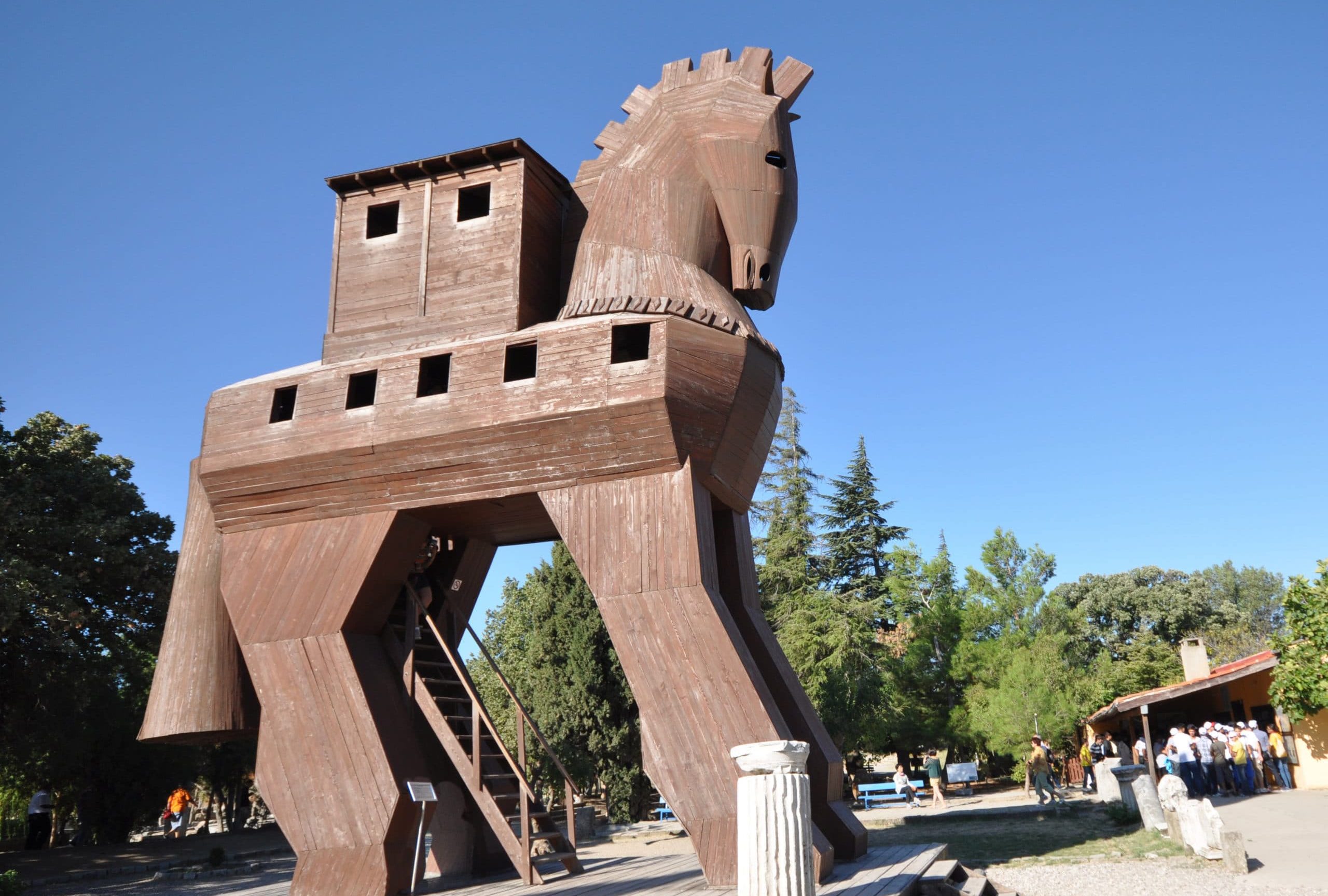
The discovery of Troy at Hisarlik in the 19th century by Heinrich Schliemann is still regarded as one of the most striking examples of Greek mythology and archaeology coming together.
However, how do we know that Schliemann really did discover Troy, and not just some random ancient city in Turkey? How do we really know where Troy was located?
How Homer’s Iliad Reveals Where Troy Was
Some evidence comes from the most famous written account of Troy – Homer’s Iliad. In this poem from the seventh century BC, Homer refers to many of Troy’s allies. He explains that during the Trojan War, Troy was supported by various other nations, such as the Phrygians, the Lydians, Mysians, Paphlagonians, and many others. Almost all the nations he mentions can be identified with nations from Anatolia. Specifically, they are almost entirely from western Anatolia.
The only notable ally of Troy in the Iliad not from Anatolia are the Thracians. The Thracians lived in Europe, just next to the north east corner of Anatolia. Their territory extended right to the Bosporus. So from this spread of nations in western Anatolia and the territory of the Thracians, it is clear that Troy was most likely located somewhere near the border between Anatolia and Europe.
The Scamander River
We know that Troy must have been near the sea, because the Iliad describes how the Greek camp near the shore was separated from Troy simply by a large plain. Therefore, Troy must have been somewhere near the coast of Western Anatolia. Homer also associates Troy with the Scamander River. Since the Scamander River flows into the Aegean Sea off Western Anatolia, this is a very helpful piece of information.
In fact, Homer specifically tells us that the Greeks set up their camp by the mouth of the river. This confirms that Troy must have been near where the Scamander River reaches the Aegean Sea.
How Herodotus Reveals Where Troy Was
The association with the Scamander River is really one of the keys in determining the location of Troy. But Homer does not tell us everything we need to know. For example, how do we really know where the Scamander was?
This river was mentioned by various ancient writers, one of them being Herodotus. In his description of Xerxes’ invasion of Greece, he describes how Xerxes’ army came across the Scamander River while marching towards the Hellespont. He explains how the army arrived at Mount Ida, and then he mentions them coming to the Scamander River immediately after this. So the Scamander River must be a prominent river near Mount Ida.
The river known as the Karamenderes in modern times is one of only three rivers that meet this criterion. And after mentioning this river, Herodotus explains that Xerxes ‘ascended to the citadel of Priam’ – that is, Troy.
He then explains that Xerxes’ army carried on their march the next day. Here, Herodotus says that the army kept the cities of Rhoetium, Ophryneum and Dardanus on their left, and the city of Gergithae on their right.
Looking at a map, it is clear that the Karamenderes River is the one which Xerxes’ army must have been at just prior to marching past these cities.
How Archaeology Confirms Where Troy Really Was
From this information, we can see that Troy must have been located near the coast, where the Karamenderes River meets the sea. From these and other Greek records, we know that there was still a functioning city called Ilion (Troy’s other name) here, in which there was still a functioning sanctuary of Athena. This city continued to be inhabited in Roman times, when it came to be known as Ilium.
Archaeology confirms that the Greek town of Ilion, with its sanctuary to Athena, was at Hisarlik. Coins have been found there with inscriptions to ‘Athena Ilias’, confirming the identification. So, we can be very sure of the location of the Ilion and Ilium of Classical Antiquity. It was definitely the archaeological site at Hisarlik.
But what about the more ancient Ilium, or Troy? Can we be sure that the Troy of the Trojan War really was here as well? After all, some writers in the Roman period believed that the Troy of legend had been located somewhere else.
However, Herodotus, who lived much earlier than these writers, expresses no such belief. He says clearly that the city visited by Xerxes, at which there was a sanctuary to Athena, was ‘the citadel of Priam’.
In addition, the archaeological excavations at Hisarlik confirm this viewpoint. They show that this city had existed long before Classical Antiquity.
It existed in the time of the Trojan War, as well as much earlier. Therefore, there is no reason to doubt that the Troy of the Trojan War really was where Schliemann claimed: Hisarlik.
See all the latest news from Greece and the world at Greekreporter.com. Contact our newsroom to report an update or send your story, photos and videos. Follow GR on Google News and subscribe here to our daily email!



